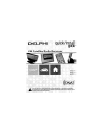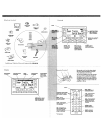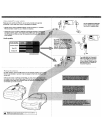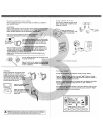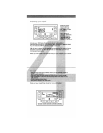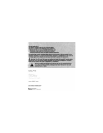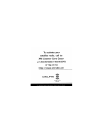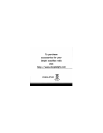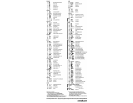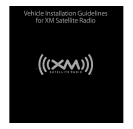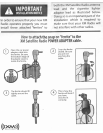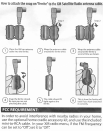
Once you have plugged the
power and antenna jacks in
to
the car cradle,
use
the included
cable organizer
as
shown in
figure 3
to
improve the overall
appearance
of
the installation.
Re-use
the cable twist ties
that
were provided
with
the
power
adaptor and car antenna cables
and always be sure
to
gather,
bundle, twist tie, and secure any
excess
cable remaining after
determining the best location for
your satellite radio installation.
For example,secure the
excess
cable up under your dash board, between
the seat and the console, or on the floor under a seat or floor mat.
This
will
help
to
prevent the
excess
cable from interfering
with
the everyday
use
of
your vehicle, improve the appearance
of
the installation, and avoid any
undesirable accidental damage
to
the cables that
might
result in
loss
of
power or satellite signal.
For
wireless
FM
modulator installations, securing and tie wrapping the
excess
cable
is
important
to
reduce background hissing noise.
Be
sure
to
choose a location carefully bytaking notice
of
how
doors and trunks open
and close,
as
well
as
how
seats
move when they are adjusted
so
you
can
be certain there
is
ample clearance provided for the cables.
FCC
INFORMATION:
Please
note that the cables and antenna wire that
has
been supplied
with
your
device are supplied
with
permanently attached ferrite beads.
It
is
the
responsibility
of
the user
to
use
the cable and antenna wire with the ferrite
beads.
The user
is
cautioned that changes or modifications
not
expressly approved by
XM
Satellite
Radio,
Inc.
can
void the
user's
authority
to
operate this device.
This device complies
with
Part 15
of
the
FCC
Rules.
Operation
is
subject
to
the
following
two
conditions: (1)
This
device may
not
cause harmful interference,
and
(2) this device must accept any interference received, including
interference that may
cause
undesired operation.
This equipment
has
been tested and found
to
comply
with
the limits for a
Class
Bdigital device, pursuant
to
Part 15
of
the
FCC
Rules.
These
limits
are
designed
to
provide reasonable protection against harmful interference in a residential
installation.
This equipment generates,
uses
and
can
radiate radio frequency energy and,
if
not
installed and used in accordance
with
the instructions, may
cause
harmful
interference
to
radio communications. However, there
is
no guarantee that
interference will
not
occur in a particular installation.
If
this equipment does
cause harmful interference
to
radio or television reception, which can be
determined by turning the equipment
off
and on, the user
is
encouraged
to
try
to
correct the interference by one or more
of
the following measures:
- Reorient or relocate the receiving antenna.
- Increase the separation between the equipment and receiver.
- Connect the equipment into
an
outlet on a circuit different from that
to
which the receiver
is
connected.
- Consult the dealer or
an
experienced radiofTV technician for help.



